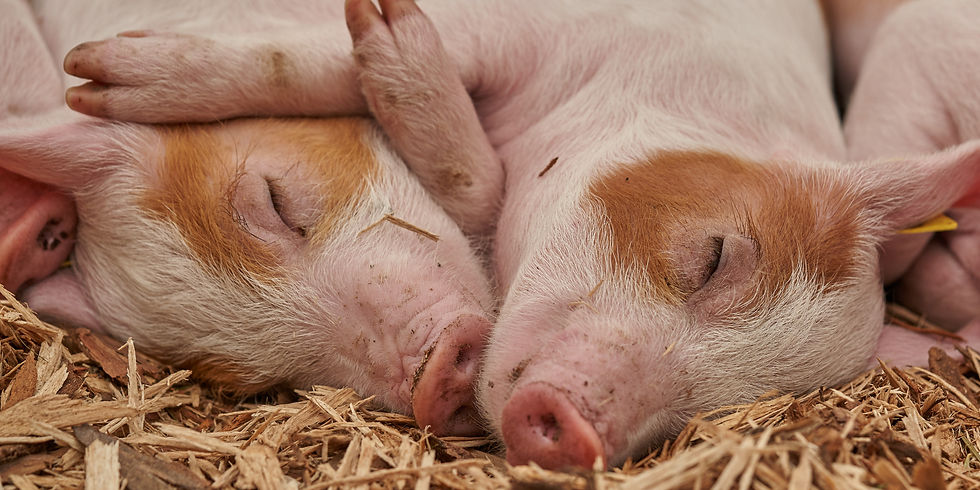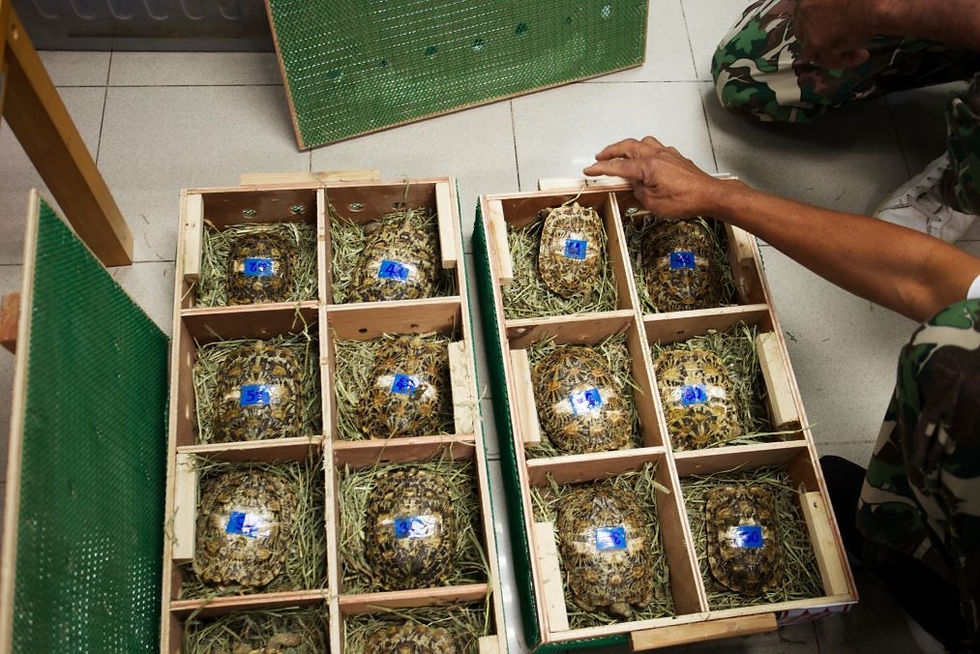Understanding Animal Sentience and Its Importance
- Brenda Karimi
- Dec 9, 2024
- 4 min read
Updated: Feb 28
Jeremy Bentham, the 18th-century philosopher, famously posed a question that resonates deeply today: “The question is not, can they reason? Nor, can they talk. But, Can they suffer?” This simple yet insightful question addresses sentience, a crucial issue in animal welfare.
But what does it mean for an animal to be sentient, and why is it so important for us to recognize it? In this article, we will explore what sentience is, how we know animals are sentient, and why acknowledging this fact can lead to significant improvements in how we treat animals.

What is sentience?
Sentience is the ability to feel, perceive, or experience things subjectively. In other words, sentient beings are aware of their surroundings and can experience pleasure, pain, joy, fear, and more.
A sentient animal has emotional and sensory experiences that can influence its interactions and behaviour. While some animals exhibit basic sentience, such as the ability to feel pleasure or pain, others display more profound forms of emotional intelligence, social skills, and problem-solving abilities.
How do we know animals are sentient?
The scientific understanding of animal sentience has significantly advanced. For years, many people ignored the idea that animals could feel pain or emotions, generally assuming that only humans were capable of doing so. However, there is plenty of evidence showing otherwise.
Observing animals in natural and controlled settings reveals a lot about their emotional states. Elephants, for example, have been spotted mourning the death of a companion, a behaviour beautifully depicted in the 2018 award-winning film The Elephant Queen, which highlights the emotional depth and social bonds of these majestic creatures.
Research on the animal brain has also revealed that animals and humans share many neural pathways related to pain and pleasure. For example, the dorsal horn of the spinal cord, which regulates pain signals in humans, is found in a variety of animals. Additionally, when frightened, animals create stress chemicals such as cortisol, much as humans do.
Impact of Recognizing Animal Sentience
Recognizing animal sentience has far-reaching implications across various sectors, promoting ethical progress, legal reform and improved welfare practices:
Improved farming practices.
Humane farming approaches have come up, with free-range systems replacing battery cages for chickens. Recognizing animals' possibility of suffering has resulted in the abolition of harsh practices such as veal cages in several countries. Proposition 12 in California, for example, establishes minimum space standards for farm animals such as pigs and hens while prohibiting severe confinement methods. Consumer demand for ethically produced goods has increased, putting pressure on industries to adopt more welfare-friendly procedures.
Environmental Impact.
Recognizing animal sentience impacts a wide range of issues, including biodiversity loss, and climate change. Industrialized animal agriculture, a major source of greenhouse gas emissions, has been identified as a major contributor to climate change.
The severe physical and psychological stress experienced by farm animals, as well as wild animals used in trade, raises the risk of disease development, spread, and cross-species transmission, including to humans.
Acknowledging sentience emphasizes the importance of phasing out high-risk practices like intensive farming and live animal trade. These methods could reduce the risk of future pandemics while also addressing environmental degradation.
Policy and legal reforms.
Several governments have introduced legislation to improve animal welfare based on sentience. For example, New Zealand passed the Animal Welfare (Amendment) Act 2015, which resulted in major animal welfare improvements including the prohibition of certain practices such as the use of farrowing crates for mother pigs. New Zealand’s approach aligns with the “five freedoms” which include freedom from hunger, discomfort, fear, pain and the ability to express natural behaviours.
Scientific research.
Recognizing that animals are sentient has sparked widespread calls to reduce the use of animals in research. Legal frameworks, like the European Union's ban on animal testing for cosmetics in 2013, demonstrate how sentience recognition can impact legislation. This Recognition of sentience has hastened the development of new non-animal research methodologies.
Challenges
Incorporating animal sentience in legislation is a big step forward for animal welfare, but it faces challenges in terms of implementation and practical application. As Rowan and his co-authors observed:
"So far, however, there has been little evidence that the various declarations that animals are sentient in other countries and regions have had much direct impact on animal protection legislation or how animals are being treated. Nevertheless, it is very unlikely that incorporating animal sentience language in legislation would be harmful to the interests of animals in any way."
The statement emphasizes the gap between legal recognition and actual outcomes. While the EU, New Zealand, and other countries have incorporated animal sentience in their legislation, the expected transformation on animal welfare has often been constrained by several factors such as economic & industry resistance where animal-based industries usually reject measures that could disrupt operations or increase costs.
Conclusion
Recognizing that animals may suffer changes our perspective on how they should be treated in many aspects of human existence, from agriculture and research to conservation and entertainment. Our acceptance of animal sentience can influence the policies, practices, and cultures which foster a more compassionate world for all living things.



Comments